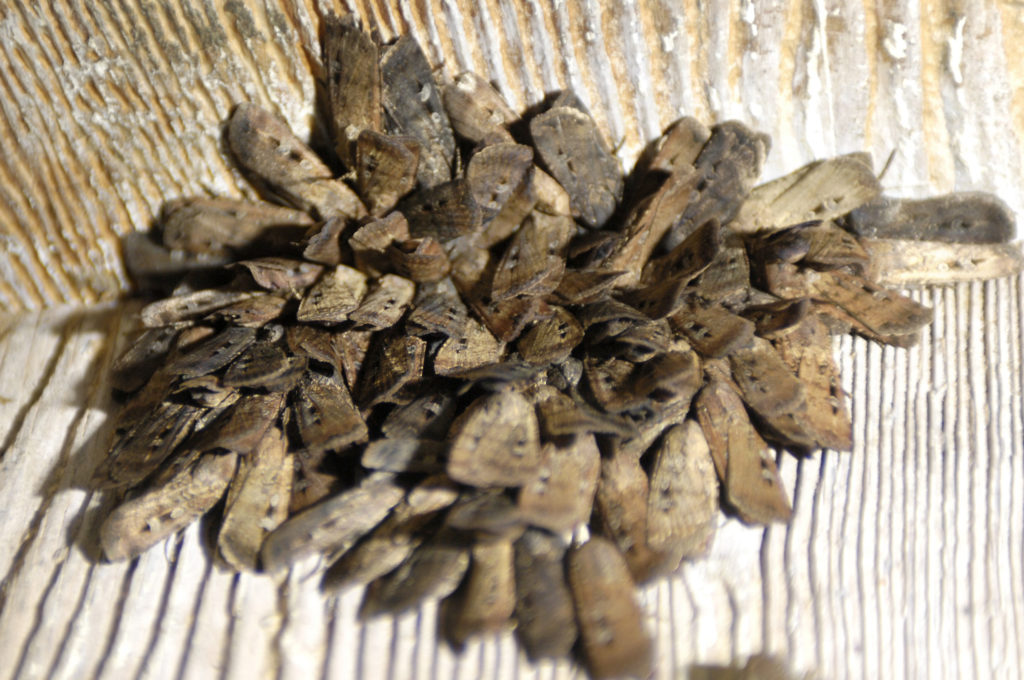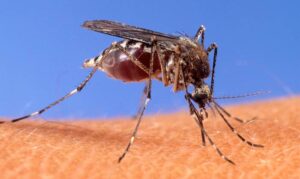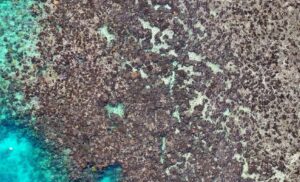
Bogong moths shelter from the sun in Canberra, Tuesday, Oct. 9, 2007, during their annual migration from Queensland to the Snowy Mountains. Canberra is directly in their flight path and thousands of moths have invaded Parliament House overnight attracted by the bright lights. (AAP Image/Alan Porritt) NO ARCHIVINGNo Use Australia. No Use New Zealand.
NEW YORK (AP) — In a groundbreaking study, researchers have discovered that the Bogong moth, a nocturnal insect native to Australia, uses the stars as a navigational compass during its annual migration. This remarkable finding positions the moth as the first known invertebrate to employ celestial navigation over long distances.
Each year, as temperatures rise, these moths embark on a 620-mile (1,000-kilometer) journey to the cooler caves of the Australian Alps. Once there, they rest before returning to their breeding grounds, where they complete their life cycle.
Understanding Celestial Navigation in Invertebrates
While birds have long been known to navigate by starlight, the discovery that moths can do the same is unprecedented. Previous studies suggested that the Earth’s magnetic field might assist the moths, but the role of visual landmarks remained a mystery. This new research sheds light on the moths’ ability to use the night sky for guidance.
Scientists conducted experiments using a flight simulator that replicated the night sky, blocking the Earth’s magnetic field to isolate the stars’ influence. When the stars were aligned correctly, the moths flew in the expected direction. However, when the stars were scrambled, the moths became disoriented, indicating their reliance on celestial patterns.
“It was a very clean, impressive demonstration that the moths really are using a view of the night sky to guide their movements,” said Kenneth Lohmann, an animal navigation expert at the University of North Carolina at Chapel Hill, who was not involved in the study.
The Intricacies of Moth Navigation
Despite the breakthrough, researchers remain uncertain about which specific features of the night sky the moths use. Possibilities include the Milky Way’s light stripe, nebulae, or other celestial markers. The study, published in the journal Nature, highlights the moths’ reliance on both the stars and Earth’s magnetic field for navigation.
Other creatures, such as birds and dung beetles, also utilize celestial cues. Birds navigate vast distances by the stars, while dung beetles use the Milky Way to maintain direction over shorter journeys. The Bogong moths’ ability to navigate using the night sky is particularly impressive given their brain size, which is smaller than a grain of rice.
“It’s remarkable that an animal with such a tiny brain can actually do this,” noted David Dreyer, a study author from Lund University in Sweden.
Implications and Future Research
The discovery of celestial navigation in moths opens new avenues for understanding animal migration and navigation. It also raises questions about the potential impact of artificial light pollution on these natural processes. As urban areas expand and light pollution increases, the ability of nocturnal animals to navigate by the stars could be compromised.
Future research may focus on identifying the specific celestial features moths use and exploring how other invertebrates might employ similar navigation techniques. Understanding these mechanisms could provide insights into the evolution of navigation across different species.
Meanwhile, the study underscores the intricate and often underestimated capabilities of invertebrates. As researchers continue to explore the natural world, discoveries like these highlight the complex interactions between organisms and their environments.
The Associated Press Health and Science Department receives support from the Howard Hughes Medical Institute’s Science and Educational Media Group and the Robert Wood Johnson Foundation. The AP is solely responsible for all content.






